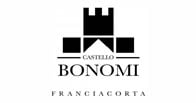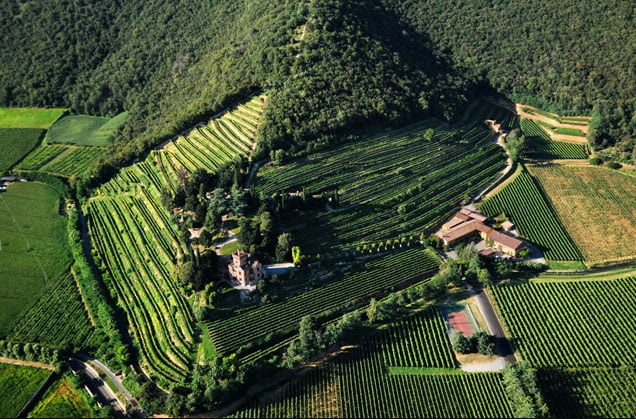Description
This Franciacorta gives unique emotions: the aromas it gives off are many and constantly evolve during the tasting. It’s a wine that lends itself well to long aging thanks to the sour verve, which immediately gives sensations of great depth.
Awards
Details

Perfume

Color

Taste
Serve at:
06 - 08 °C.
Longevity:
15 - 25 years

Pairings
- Start up year: 1985
- Oenologist: Luigi Bersini
- Bottles produced: 200.000
- Hectares: 32
Here the first wine was born, in the 13th century, four hundred years before that in Champagne. A land of abbeys and priories, this moraine area bounded by Monte Orfano, Monte Alto and the hills of Lake Iseo, knows had its first major development in wine production in the second half of 800, when the historian Gabriele Rosa defined it as a land of "excellent black and white wines". Castello Bonomi lies on the slopes of Monte Orfano, a jewel in a marvelous casket, the only Chateau of Franciacorta. The Castello Bonomi estate takes its name from the original Art Nouveau building designed by architect Antonio Tagliaferri at the end of 800.
The rennovation of the historic cellars combined with the creation of new underground spaces has provided the Castello Bonomi estate with cellars that total an area of ??more than 1500 square meters.
The annual production of the company is about 150 thousand bottles: 100 thousand of Franciacorta CruPerdu, Satèn, Rosé, Millesimato, Cuvée Lucrezia and Lucrezia Etichetta Nera, Cuvée del Laureato; the rest divided between the Curtefranca: Solicano, Conte Foscari and Cordelio. Read more


| Name | Castello Bonomi Franciacorta Riserva Extra Brut Lucrezia Etichetta Bianca 2009 |
|---|---|
| Type | White organic extra brut |
| Denomination | Franciacorta DOCG |
| Vintage | 2009 |
| Size | 0,75 l |
| Alcohol content | 12.5% by volume |
| Grape varieties | 70% Pinot Nero, 30% Chardonnay |
| Country | Italy |
| Region | Lombardy |
| Vendor | Castello Bonomi |
| Origin | Foot of Monte Orfano |
| Soil composition | The vineyards have a predominantly calcareous soil that gives great longevity to its fruits and, the extremely low yields per hectare, guarantee optimal ripening and great aromatic concentration. |
| Harvest | The harvest is early to ensure a balance between acids and sugar. |
| Wine making | After harvesting the grapes are gently pressed in a totally inert environment. Only the first pressing is used to compose this reserve. The fermentation for the Chardonnay takes place in French oak barriques, at a controlled temperature, and the lees are continuously put in suspension with the technique of battonage. Pinot Noir is made in steel tanks and in spring the blend takes place. |
| Aging | After the refermentation in the bottle, the aging on the lees lasted for 144 months. |
| Allergens | Contains sulphites |





